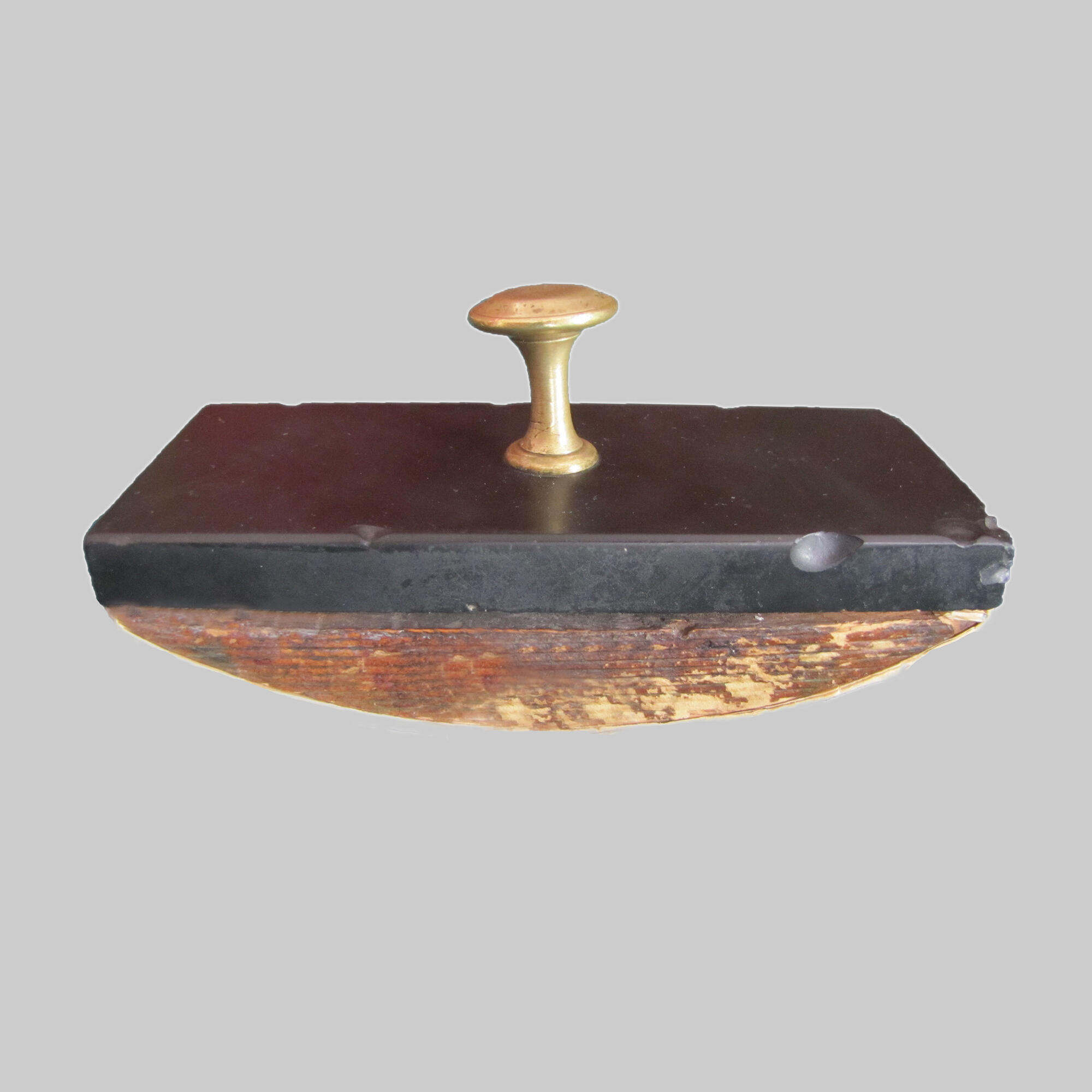Paperweights are heavy accessories designed to prevent sheets from sliding on the table and from flying around a room in the wind. Their main difference from any other weighty thing is that office supplies are produced in limited editions in special factories or in design studios.
Many of the specimens are works of art and are sought after by collectors. The masters of the 19th-20th centuries spared neither time nor materials to create those decorative elements. The assortment includes Bohemian glass, precious stones and metals, rare wood species.
Georgy Chicherin was the owner of a press-case - a type of paperweight consisting of a handle, a stone weighting agent, an arched wooden block and a blotter. To remove excess ink from the page and to speed up the drying of manuscripts, it had to be tilted from side to side.
The blotting paper was made from cellulose, which absorbs liquids very quickly. For many years it was indispensable when working with correspondence and documents.
Other writing materials used by family members have also been preserved in the house-museum. For example, an inkwell, pencil holder, candlestick and matchbox holder, and a cutter knife.
Let me remind you that Georgy Chicherin worked as People’s Commissar for Foreign Affairs of the RSFSR and the USSR from 1918 to 1930. During that time, he managed to lead several Soviet delegations and take part in the signing of international treaties, which made a significant contribution to overcoming the isolation of the fatherland from the world community.
His working room in the house-museum is decorated in the style typical for the offices of the Ministry of Foreign Affairs in the 1920s and 1930s. In addition to the press case, there were: an ink set, a lamp and a telephone on a table.
It is worth noting that many artifacts related to the activity of the revolutionary and diplomat ended up in cultural funds thanks to the Ministry of Foreign Affairs. For example, photographs, books and furniture.
Many of the specimens are works of art and are sought after by collectors. The masters of the 19th-20th centuries spared neither time nor materials to create those decorative elements. The assortment includes Bohemian glass, precious stones and metals, rare wood species.
Georgy Chicherin was the owner of a press-case - a type of paperweight consisting of a handle, a stone weighting agent, an arched wooden block and a blotter. To remove excess ink from the page and to speed up the drying of manuscripts, it had to be tilted from side to side.
The blotting paper was made from cellulose, which absorbs liquids very quickly. For many years it was indispensable when working with correspondence and documents.
Other writing materials used by family members have also been preserved in the house-museum. For example, an inkwell, pencil holder, candlestick and matchbox holder, and a cutter knife.
Let me remind you that Georgy Chicherin worked as People’s Commissar for Foreign Affairs of the RSFSR and the USSR from 1918 to 1930. During that time, he managed to lead several Soviet delegations and take part in the signing of international treaties, which made a significant contribution to overcoming the isolation of the fatherland from the world community.
His working room in the house-museum is decorated in the style typical for the offices of the Ministry of Foreign Affairs in the 1920s and 1930s. In addition to the press case, there were: an ink set, a lamp and a telephone on a table.
It is worth noting that many artifacts related to the activity of the revolutionary and diplomat ended up in cultural funds thanks to the Ministry of Foreign Affairs. For example, photographs, books and furniture.



